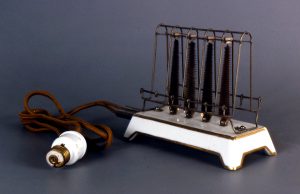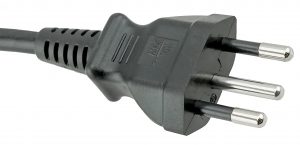Why isn’t there a universal standard electric plug?

A 1909 toaster with a lightbulb socket
When electricity was first introduced into the domestic environment it was primarily for lighting. However, as it became a viable alternative to other means of heating and also the development of labour-saving appliances, a means of connection to the supply other than via a light socket was required. In 1883, the two-prong electric plug was invented by TT Smith.
At that time, some electricity companies operated a split tariff system where the cost of electricity for lighting was lower than that for other purposes, which led to low wattage appliances (e.g. vacuum cleaners, hair dryers, etc.) being connected to the light fitting. The picture shows a 1909 electric toaster with a lightbulb socket plug (an Edison screw fitting, to be exact).
As the need for safer installations grew, three-pin outlets were developed. The third pin on the outlet was an earth pin, which was effectively connected to earth, this being at the same potential as the neutral supply line. The idea behind it is that in the event of a short circuit to earth, a fuse will blow, thus disconnecting the supply.




